Why Industrial Paint Colors Matter More Than You Think
Posted Mar 24, 2025 by Dave Scaturro

When it comes to industrial painting, color is often an afterthought. Many facility managers and business owners focus on durability, corrosion resistance, and coating performance while overlooking the impact of color choice. However, the right industrial paint colors do more than just make a space look good—they play a crucial role in visibility, safety, efficiency, and even employee productivity. Choosing the right colors can improve workflow, enhance safety compliance, and create a more pleasant work environment.
Color and Workplace Safety
One of the most important reasons to consider industrial paint colors carefully is workplace safety. The Occupational Safety and Health Administration (OSHA) and the American National Standards Institute (ANSI) provide guidelines on color coding for industrial environments to help prevent accidents and ensure compliance.
Red – Used for fire protection equipment, emergency stop buttons, and areas where danger is present.
Yellow – Warns of physical hazards like trip hazards, heavy machinery zones, or forklift traffic lanes.
Green – Indicates safety zones, first-aid stations, and emergency exits.
Blue – Designates equipment under repair or mandatory precautions.
Orange – Warns of high-risk areas, such as moving parts and hazardous machinery.
By using the appropriate colors, businesses can improve visibility and reduce workplace accidents, ultimately creating a safer and more organized environment.
Enhancing Productivity with Color Psychology
Beyond safety, industrial paint colors also influence mood and productivity. Studies in color psychology suggest that certain colors can affect cognitive function, concentration, and energy levels.
Blue and Green – These colors are known for their calming effects, making them ideal for control rooms, offices, and workspaces where employees need to focus for long periods.
Yellow – Bright and energizing, yellow can promote alertness and optimism, which is why it is often used in manufacturing environments.
Gray and Neutral Tones – While these colors create a professional, modern aesthetic, too much gray can feel uninspiring. Pairing neutral tones with vibrant accent colors can maintain a balanced atmosphere.
Choosing the right color scheme can boost morale and improve employee well-being, leading to greater efficiency and job satisfaction.
Operational Benefits of Color-Coded Areas
Color isn’t just about aesthetics; it serves a functional purpose in industrial environments. Using color strategically can improve workflow and efficiency.
Color-Coded Zones – Assigning specific colors to different areas helps employees quickly identify workstations, storage areas, and restricted zones.
Visual Organization – Marking pathways, inventory sections, and production lines with different colors helps streamline processes and reduce errors.
Maintenance and Durability – Lighter colors can highlight dirt and wear, making it easier to identify areas in need of maintenance, while darker colors can help conceal stains in high-traffic areas.
Choosing the Right Paint for Industrial Settings
Aside from selecting the right colors, it’s important to choose industrial coatings that can withstand harsh conditions. High-performance coatings such as epoxy, polyurethane, and alkyd paints offer durability, chemical resistance, and longevity. When selecting colors, businesses should also consider factors like lighting, environmental exposure, and compliance regulations to ensure the best results.
Invest in the Right Industrial Paint Colors
Color is a powerful tool that goes way beyond aesthetics—it enhances safety, improves productivity, and optimizes operational efficiency. Whether you’re looking to comply with safety regulations, create a more engaging workspace, or organize your facility better, the right paint colors can make all the difference. Contact our team today to explore industrial coating solutions that enhance both form and function.









